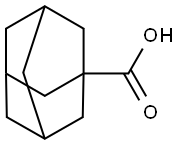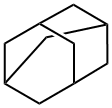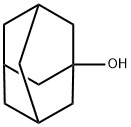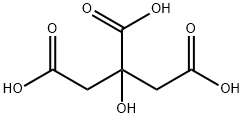1-Adamantanecarboxylic acid
- CAS NO.:828-51-3
- Empirical Formula: C11H16O2
- Molecular Weight: 180.24
- MDL number: MFCD00074720
- EINECS: 212-584-6
- SAFETY DATA SHEET (SDS)
- Update Date: 2025-01-27 09:38:02

What is 1-Adamantanecarboxylic acid?
Chemical properties
white to off-white crystalline powder
The Uses of 1-Adamantanecarboxylic acid
1-Adamantanecarboxylic acid can be used as:
- A stabilizer in the synthesis of monodisperse, highly crystalline CoPt3?nanoparticles and porous platinum nanoparticles.
- An additive in polycondensation reactions to yield conjugated polymers as possible optoelectronic materials.
- An additive in the allylic substitution reaction, which is catalyzed by palladium in an aqueous medium.
The Uses of 1-Adamantanecarboxylic acid
Adamantoic Acid is an inhibitor of chorismate mutase activity and hydroxyphenylpyruvate synthase. It inhibits TTR conformational changes facilitating amyloid fibril formation.
The Uses of 1-Adamantanecarboxylic acid
It can be used as a stabilizer in the synthesis of monodisperse, highly crystalline CoPt3 nanoparticles1 and porous platinum nanoparticles. It is a potent and reversible CerK inhibitor.
What are the applications of Application
1-Adamantanecarboxylic acid is a potent and reversible CerK inhibitor
Synthesis Reference(s)
Synthetic Communications, 18, p. 545, 1988 DOI: 10.1080/00397918808060749
Biochem/physiol Actions
1-Adamantanecarboxylic acid undergoes complexation reactions with cyclohexaamylose. It is an inhibitor of phenyl ester hydrolysis of cycloheptaamylose.
Purification Methods
Possible impurities are trimethylacetic acid and C9 and C13 acids. Dissolve 15g of the acid in CCl4 (300mL) and shake with 110mL of 15N aqueous NH3 whereby the ammonium salt separates and is collected. Acid impurities form soluble ammonium salts. The salt is washed with cold Me2CO (20mL) and suspended in H2O (250mL). This is treated with 12N HCl and extracted with CHCl3 (100mL). The dried (Na2SO4) extract was evaporated and the residue was recrystallised from a mixture of MeOH (30mL) and H2O (ca 10mL) to give the pure acid (10-11g). [Koch & Haaf Org Synth Coll Vol V 20 1973.] It was also recrystallised from absolute EtOH and dried under vacuum at 100o. Alternatively, the acid (5g) is refluxed for 2hours with 15mL of MeOH and 2mL of 98% H2SO4 (cool when mixing this solution). Pour into 10 volumes of H2O and extract with the minimum volume of CHCl3 to give clear separation of phases. The extract is washed with H2O, dried (CaCl2) and distilled. The methyl ester is collected at 77-79o/1mm, m 38-39o. The ester is hydrolysed with the calculated amount of N KOH and refluxed until clear. Acidification with HCl provides the pure acid with 90% recovery. The amide crystallises from cyclohexane, m 189o. [Stetter et al. Chem Ber 92 1629 1959.] [Beilstein 9 IV 253.]
Properties of 1-Adamantanecarboxylic acid
| Melting point: | 172-174 °C (lit.) |
| Boiling point: | 253.08°C (rough estimate) |
| Density | 0.9976 (rough estimate) |
| refractive index | 1.4910 (estimate) |
| storage temp. | Sealed in dry,Room Temperature |
| solubility | Chloroform, Methanol (Slightly) |
| pka | 4.86±0.20(Predicted) |
| form | Crystalline Powder |
| color | White to off-white |
| Water Solubility | Insoluble in water. Solubility in methanol gives very faint turbidity. Soluble in ethanol, chloroform, and dichloromethane. |
| BRN | 1910637 |
| CAS DataBase Reference | 828-51-3(CAS DataBase Reference) |
| NIST Chemistry Reference | Adamantane-1-carboxylic acid(828-51-3) |
Safety information for 1-Adamantanecarboxylic acid
| Signal word | Warning |
| Pictogram(s) |
 Exclamation Mark Irritant GHS07 |
| GHS Hazard Statements |
H315:Skin corrosion/irritation H319:Serious eye damage/eye irritation H335:Specific target organ toxicity, single exposure;Respiratory tract irritation |
| Precautionary Statement Codes |
P261:Avoid breathing dust/fume/gas/mist/vapours/spray. P264:Wash hands thoroughly after handling. P264:Wash skin thouroughly after handling. P280:Wear protective gloves/protective clothing/eye protection/face protection. P304+P340:IF INHALED: Remove victim to fresh air and Keep at rest in a position comfortable for breathing. P305+P351+P338:IF IN EYES: Rinse cautiously with water for several minutes. Remove contact lenses, if present and easy to do. Continuerinsing. P405:Store locked up. |
Computed Descriptors for 1-Adamantanecarboxylic acid
| InChIKey | JIMXXGFJRDUSRO-UHFFFAOYSA-N |
1-Adamantanecarboxylic acid manufacturer
New Products
3-Oxocyclobutane-1-carboxylicacid 4-(Ethylaminomethyl)pyridine Ethyl 3-pyridylacetate 5-Chloro-1-(4-piperidyl)-2-benzimidazolinone Pyridin-4-ylmethanol hydrobromide Trans-methyl 4-aminocyclohexane- carboxylate HCl 1-Indanone 4-Chloro Phenyl hydrazine hydrochloride Nintedanib Ethanesulfonate (S)-2-(3,5-diMethylphenyl)pyrrolidine Ethyl 2-(4-(chlorosulfonyl)-2-methylphenoxy)acetate (2R,3S,4S,5R)-3-(3,4-difluoro-2-methoxyphenyl)-4,5-dimethyl-5-(trifluoromethyl)tetrahydrofuran-2-carboxylic acid (R)-1-phenylethan-1-amine salt 1-Bromo-2-Methoxy-3-Nitrobenzene N N N'Trimethyl ethylenediamine N Ethylmethylamine Ethyl Methanesulfonate Variamine Blue B Diazonium salt Lead II Bromide N N' DimethylEthylenediamine L-Glycine methyl ester.HCl Calcium Alphaketoglutarate* Fmoc-L-Glu(OtBu)-OH.H2O H-Ser(t-Bu)-Ser(t-Bu)-Gly-OH Fmoc-Ser(tBu)-Ser(Ψ(Me,Me)pro-OHRelated products of tetrahydrofuran








You may like
-
 828-51-3 99%View Details
828-51-3 99%View Details
828-51-3 -
 1-Adamantanecarboxylic Acid (purified by sublimation) CAS 828-51-3View Details
1-Adamantanecarboxylic Acid (purified by sublimation) CAS 828-51-3View Details
828-51-3 -
 Adamantane-1-carboxylic acid 95% CAS 828-51-3View Details
Adamantane-1-carboxylic acid 95% CAS 828-51-3View Details
828-51-3 -
 1-Adamantanecarboxylic acid CAS 828-51-3View Details
1-Adamantanecarboxylic acid CAS 828-51-3View Details
828-51-3 -
![3-(4-bromo-3-methyl-2-oxo-2,3-dihydro-1H-benzo[d]imidazol-1-yl)piperidine-2,6-dione 98+](https://img.chemicalbook.in//Content/image/CP5.jpg) 3-(4-bromo-3-methyl-2-oxo-2,3-dihydro-1H-benzo[d]imidazol-1-yl)piperidine-2,6-dione 98+View Details
3-(4-bromo-3-methyl-2-oxo-2,3-dihydro-1H-benzo[d]imidazol-1-yl)piperidine-2,6-dione 98+View Details
2304754-51-4 -
 2,3-Difluoro-6-methoxybenzyl Chloride 1073435-67-2 98+View Details
2,3-Difluoro-6-methoxybenzyl Chloride 1073435-67-2 98+View Details
1073435-67-2 -
 2-(6-(benzyloxy)-3,4-dihydronaphthalen-2-yl)-4,4,5,5-tetramethyl-1,3,2-dioxaborolane 98+View Details
2-(6-(benzyloxy)-3,4-dihydronaphthalen-2-yl)-4,4,5,5-tetramethyl-1,3,2-dioxaborolane 98+View Details
2477812-43-2 -
 KT-474 98+View Details
KT-474 98+View Details
2432994-31-3
